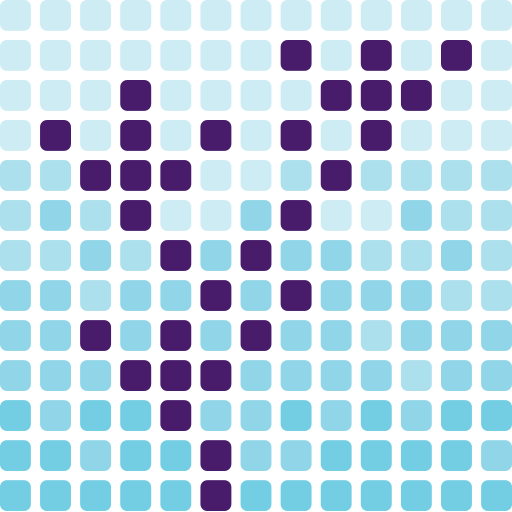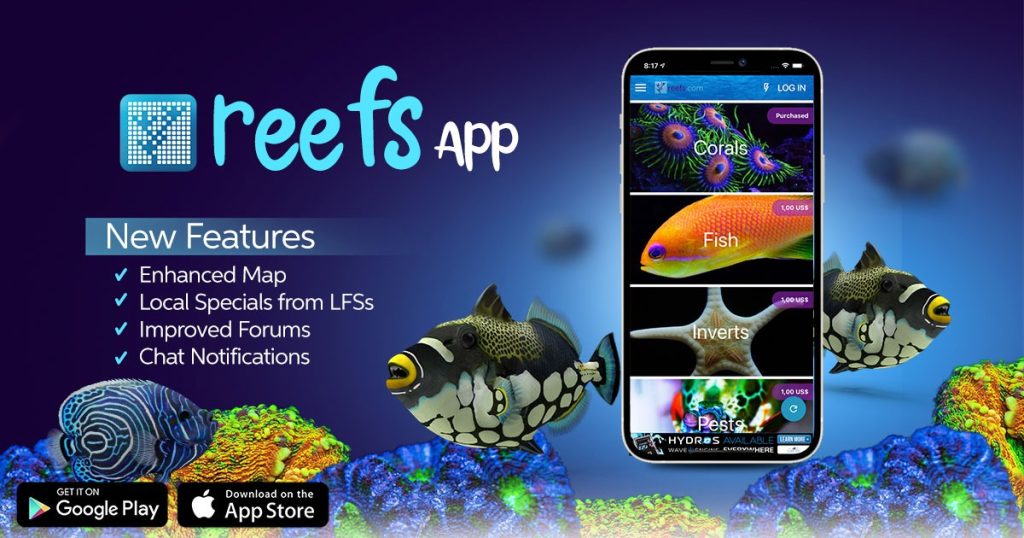For the past month, NOAA’s Okeanos Explorer has been busily studying the marinelife around Puerto Rico as part of their Océano Profundo 2018 expedition. From “shallow” reefs at 250 meters to the deepest dive ever attempted in the region—5,000 meters into the briny depths around Mona Seamount—the ocean revealed a treasure trove of incredible finds. There were bizarre crustaceans… weird, pulsating jellies… an unprecedented forest of crinoids… a possible new sea star genus… gorgeously colorful anglerfishes… a rare sighting of a developing shark embryo. And it wasn’t all just deepsea oddities; there were sightings of fishes that should be recognizable to aquarists, like the Red-banded Wrasse (Polylepion sp.) and the true “Apricot Basslet” (Plectranthias garrupellus), and a tiny Bladefin Basslet (Jeboehlkia gladifer).
Sadly, this will be the last ROV mission of the year. Okeanos is moving on now to map the continental shelf of the Southeastern United States, which will eventually be explored with their ROVs next May. Following that, they’ll be in the Azores and Mid-Atlantic Ridge in July and the New England Seamounts in August. Yes, it’s going to be a long, cold winter without ROV livestreams, but here are some highlights of the recent expedition to get you through. Enjoy!
Great imagery by #Okeans of a benthic siphonophore! Siphonophores are colonial organisms related to jellyfish – the most well-known one is the Portuguese man o' war. They've got groups of individuals (zooids) with specific functions like movement, defense, etc. pic.twitter.com/3CRbVGf5qU
— Megan McCuller, ectoproctologist (@mccullermi) November 19, 2018
Isopod 4989 m deep at Mona Seamount. #Okeanos pic.twitter.com/X83O6rFlQ4
— Tara Harmer Luke (@TaraLuke1) November 19, 2018
Cladorhizid (carnivorous) sponge with some interesting morphology. #Okeanos pic.twitter.com/oB1g4vN3YP
— Megan McCuller, ectoproctologist (@mccullermi) November 19, 2018
A polychaete (6 cm length) with gold legs and a blue stripe! 4993 m #Okeanos Mona Seamount #Wormwednesday pic.twitter.com/KCZUv0rTLT
— Christopher Mah, (@echinoblog) November 19, 2018
Most people may have missed this good fish, but the lead scientists at least mentioned it! This is Jeboehlkia gladifer, and a tiny one at that, right next to the hermit crab #okeanos @oceanexplorer pic.twitter.com/hiLZCz8832
— Ray Simpson (@WAtlFish) November 15, 2018
OH WOW! Crinometra FEATHER STAR FIELD! 347m on #Okeanos Desecho Ridge, Puerto Rico HUNDREDS of them! pic.twitter.com/y1mxSMnOMC
— Christopher Mah, (@echinoblog) November 18, 2018
Cerianthid anemone 4957 m deep at Mona Seamount. #Okeanos pic.twitter.com/l8A9qeOq3m
— Tara Harmer Luke (@TaraLuke1) November 19, 2018
Black coral 4967 m deep at Mona Seamount. #Okeanos pic.twitter.com/TKaHqTTht6
— Tara Harmer Luke (@TaraLuke1) November 19, 2018
Loving the #SaturdayMorningDeepSeaFishes from #okeanos pic.twitter.com/6dlTHCP2Ku
— Dr. Rene P. Martin (@Lampichthys) November 17, 2018
Umbellula 4992 m deep at Mona Seamount. #Okeanos pic.twitter.com/Lca8ofqr2u
— Tara Harmer Luke (@TaraLuke1) November 19, 2018
The claw…THE CLAW!!#okeanos pic.twitter.com/eZpYgVz1Np
— KatieOcean on Bluesky & Mastodon (@katie_at_sea) November 13, 2018
Red sponge 321 m deep west of Desecheo Island. #Okeanos pic.twitter.com/epZrx8fkXG
— Tara Harmer Luke (@TaraLuke1) November 15, 2018
A very handsome urchin, Calocidaris micans, 255 m, Pichincho Wall east.. cidaroids are thought to be predators on feather stars and other inverts.. #Okeanos pic.twitter.com/FUkleOROrF
— Christopher Mah, (@echinoblog) November 15, 2018
https://twitter.com/roomthily/status/1064555923388035075
Wow this is beautiful! #okeanos #coral pic.twitter.com/bwXvwv5DHl
— Ray Simpson (@WAtlFish) November 13, 2018
A scleronephthyid soft coral with ginormous sclerites! 268 m #Okeanos Pichincho Wall East pic.twitter.com/hrcf1ATweT
— Christopher Mah, (@echinoblog) November 15, 2018
https://twitter.com/Cartoon_Neuron/status/1063822032335458305
I need some FISH #Okeanos ! But until then some brisingid stars will suffice… pic.twitter.com/AUufq2KC0C
— Ray Simpson (@WAtlFish) November 12, 2018
#Okeanos
Queen snapper pic.twitter.com/I18n8dZpoL— David Whittle (@13SciDave) November 16, 2018
Crinoid garden, near Puerto Rico and US Virgin Islands, depth of ~300 m below surface #Okeanos pic.twitter.com/cNolhP8eCz
— Maryam A. (@MaryamATweets) November 18, 2018
A 6 armed sea star that was last seen in 2015, but was not seen for about 130 years before that, near Puerto Rico and US Virgin Islands, depth of ~3.4 km below surface #Okeanos pic.twitter.com/QC5s7cBqmH
— Maryam A. (@MaryamATweets) November 11, 2018
A sea star actively feeding on a coral – you can see its stomach extended outside its body! @echinoblog #Okeanos pic.twitter.com/D30sYjCNDA
— Megan McCuller, ectoproctologist (@mccullermi) November 17, 2018
Hermit crab 324 m deep west of Desecheo Island. #Okeanos pic.twitter.com/h0zKFLXvhl
— Tara Harmer Luke (@TaraLuke1) November 15, 2018
A fun-filled, diverse #okeanos dive today invert-wise so far but I'm holding out hope for fish as they head into the shallower structure! Fingers crossed for anthiadines! Here's a pretty young Chaunax thang pic.twitter.com/K3hI0qQ1bG
— Ray Simpson (@WAtlFish) November 13, 2018
An undescribed species of Plectranthias! #okeanos @oceanexplorer pic.twitter.com/4ASxc6pzma
— Ray Simpson (@WAtlFish) November 18, 2018
Queen snappers, crinoids, sponges, sea urchins, and hermit crab 365 m deep, west of Desecheo. #Okeanos pic.twitter.com/3SYWFC177T
— Tara Harmer Luke (@TaraLuke1) November 18, 2018
Pom pom anemone 434 m deep at Pichincho, west of Puerto Rico. #Okeanos pic.twitter.com/456q7QyPj5
— Tara Harmer Luke (@TaraLuke1) November 16, 2018
A colorful crab with some bright yellow zoanthid buddies. #Okeanos pic.twitter.com/AvYX5YSIHU
— Megan McCuller, ectoproctologist (@mccullermi) November 15, 2018
It might not be brightly colored, but this corallimorph had a network of beautiful (what looked like) purple iridescence throughout. #Okeanos pic.twitter.com/Rqk3Weipvh
— Megan McCuller, ectoproctologist (@mccullermi) November 15, 2018
A UFO sponge! (That's not what it's actually called…) #Okeanos pic.twitter.com/FWI47BNC1e
— Megan McCuller, ectoproctologist (@mccullermi) November 14, 2018
Amazing shots of the super rare HOLOPUS, a kind of stalked crinoid, 418m from Isla de Mona, Puerto Rico #Okeanos of interest to @SBM_Concarneau ! pic.twitter.com/iO6pgEb9Mg
— Christopher Mah, (@echinoblog) November 13, 2018
A colorful, bristly shrimpy – new observation for this expedition. #Okeanos pic.twitter.com/6zHhLCiSXn
— Megan McCuller, ectoproctologist (@mccullermi) November 13, 2018
https://twitter.com/Docteur_Drey/status/1062122820518453248
Orange sea star 436 m deep at Pichincho west of Puerto Rico. #Okeanos pic.twitter.com/vfTsbMCHgv
— Tara Harmer Luke (@TaraLuke1) November 16, 2018
Catshark and Queen Snapper, 438 m deep at Pichincho, west of Puerto Rico. #Okeanos pic.twitter.com/ZCzkBMn2CR
— Tara Harmer Luke (@TaraLuke1) November 16, 2018
oh NICE! Plinthaster dentatus, goniasterid sea star FEEDING on this sponge! NOM NOM! 323 m #Okeanos Bajo de Sico pic.twitter.com/IHyjZglm3a
— Christopher Mah, (@echinoblog) November 14, 2018
Fishes, sponges, and echinoderms, around 350 m deep north of Bajo de Sico. #Okeanos pic.twitter.com/DZADBoREGq
— Tara Harmer Luke (@TaraLuke1) November 14, 2018
Sea star 2395 m deep on the east side of Mona Canyon. #Okeanos pic.twitter.com/b8cuVaQVBQ
— Tara Harmer Luke (@TaraLuke1) November 12, 2018
Wormhenge! #okeanos pic.twitter.com/Oi8zJerOZJ
— Тэ дрэвэт утвикλэрэн (@TeaDrivenDev) November 11, 2018
Stalked crinoid 455 m deep at Pichincho, west of Puerto RIco. #Okeanos pic.twitter.com/IrZ4evYwud
— Tara Harmer Luke (@TaraLuke1) November 16, 2018
Goniasterid sea star 255 m deep west of Puerto Rico. #Okeanos pic.twitter.com/ruKtwTctUY
— Tara Harmer Luke (@TaraLuke1) November 15, 2018
Sea star 251 m deep west of Desecheo Island. #Okeanos pic.twitter.com/gV1ncGPBGi
— Tara Harmer Luke (@TaraLuke1) November 15, 2018
A pancake urchin moving about! #Okeanos pic.twitter.com/xwIdUApH42
— Megan McCuller, ectoproctologist (@mccullermi) November 13, 2018
ahhhh toothy boi #okeanos pic.twitter.com/IQv63pCbRP
— asia murphy phd (look! colonialism!) (@am_anatiala) November 16, 2018
Anemone, 364 m deep west of Desecheo Island. #Okeanos pic.twitter.com/6WlufQGv5o
— Tara Harmer Luke (@TaraLuke1) November 15, 2018
Squid 365 m deep at Pichincho Wall, west of Puerto Rico. #Okeanos pic.twitter.com/x8lQBwydJs
— Tara Harmer Luke (@TaraLuke1) November 15, 2018
An interesting sleeze of euplectellid glass sponges! 408 m, Isla de Mona escarpment, #Okeanos today! pic.twitter.com/WMNsQZKM51
— Christopher Mah, (@echinoblog) November 13, 2018
Polylepion n. sp. doing a Fido impression! #okeanos almost #wrassewednesday pic.twitter.com/nLqVVh36DC
— Ray Simpson (@WAtlFish) November 13, 2018
A slit shell snail at 410 m #Pleurotammaridae #Okeanos Isla de Mona escarpment pic.twitter.com/3ixMZVykRW
— Christopher Mah, (@echinoblog) November 13, 2018
What a nice and curly brisingid! #Okeanos pic.twitter.com/VBTlW0thjn
— Megan McCuller, ectoproctologist (@mccullermi) November 12, 2018
Holothurian, near Puerto Rico and US Virgin Islands, depth of ~3.4 km below surface #Okeanos pic.twitter.com/XCAtkcDXL3
— Maryam A. (@MaryamATweets) November 11, 2018
Bathysaurus 3324 m deep at the Vega Baja Landslide north of Puerto Rico. #Okeanos pic.twitter.com/hJ4izjEri8
— Tara Harmer Luke (@TaraLuke1) November 11, 2018
Multi-taxon assemblage! Calocidaris, along with a feather star in the foreground and what might be a xenophyophore (protist) 363 m #Okeanos Bajo de Sico pic.twitter.com/8t1hbJ0re7
— Christopher Mah, (@echinoblog) November 14, 2018
A striking gorgonocephalid 'basket star" #Ophiuroid at 410 m Isla de Mona Escarpment, #Okeanos pic.twitter.com/yZgcu8ArPj
— Christopher Mah, (@echinoblog) November 13, 2018
A gorgeous brisingid, possibly the genus Hymenodiscus, about 2150 m #Okeanos Mona Canyon east pic.twitter.com/e3PLHQL7nE
— Christopher Mah, (@echinoblog) November 12, 2018
ooo! I think the serpent star is Hemieuryale pustulata! interesting! #Okeanos 413 m Isla de Mona escarpment pic.twitter.com/TVz3KEy5sA
— Christopher Mah, (@echinoblog) November 13, 2018
A farreid glass sponge! 2320 m on #Okeanos today in Mona Canyon east! pic.twitter.com/F9yCagKEqH
— Christopher Mah, (@echinoblog) November 12, 2018
And we end today's dive with this lovely stalked crinoid at 2615 m! #Okeanos Jaguey Spur pic.twitter.com/PZnWH5tCiH
— Christopher Mah, (@echinoblog) November 9, 2018
YOWEE!! A likely new genus, species of goniasterid sea star! 2650 m #Okeanos Jaguey Spur! pic.twitter.com/N5UV8KX6oG
— Christopher Mah, (@echinoblog) November 9, 2018
Interesting benthic ctenophore 2737 m deep southwest of Puerto Rico at Jaguey Spur. #Okeanos pic.twitter.com/CX81PNOmKF
— Tara Harmer Luke (@TaraLuke1) November 9, 2018
An armored searobin showing off its walking "legs" which are really modified fin rays. #Okeanos pic.twitter.com/nazSHVO2zZ
— Megan McCuller, ectoproctologist (@mccullermi) November 8, 2018
Did you know that giant isopods are pretty good swimmers? #Okeanos pic.twitter.com/nqXlngqYwM
— Megan McCuller, ectoproctologist (@mccullermi) November 8, 2018
A pancake urchin in the genus Phormosoma. This one has a lot of inflated sacs! @echinoblog #Okeanos pic.twitter.com/3WOldE18gT
— Megan McCuller, ectoproctologist (@mccullermi) November 8, 2018
A #jellyfish! Just amazing. But pssst: we can see your private parts 😳🙈 #troublewithbeingtransparent #okeanos pic.twitter.com/Ko7SwhBEyD
— Karen Yip (@KBYip) November 8, 2018
Crab be crazy #okeanos pic.twitter.com/aRT92i7yK7
— KatieOcean on Bluesky & Mastodon (@katie_at_sea) November 6, 2018










0 Comments